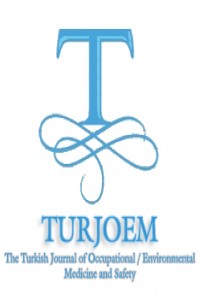Öz
Mirtazapine
(MIRT) is a tetracyclic antidepressant used in the treatment of patients with
severe depression. Mirtazapine has a unique and specific effect on both the
noradrenergic and serotonergic neurotransmitter systems. In healthy
individuals, MIRT is rapidly absorbed after a single oral dose, reaching peak
plasma concentrations within 1 to 2.1 hours. The absolute bioavailability at
steady state is approximately 50%. MIRT shows linear pharmacokinetics over a
dose range of 15 to 80mg/day, elimination half life ranges from 20–40h. MIRT is
extensively metabolized in the liver via demethylation and hydroxylation,
followed by glucuronide conjugation. MIRT is not cause major toxicity but cases
of severe effects (seizures, serotonin toxicity and coma) also have been
reported. So, the development of a rapid and simple method for the
determination of the MIRT in plasma is important in forensic toxicologic
screening to identify and quantify a probable intoxication. Several
chromatographic methods were developed for the determination of a MIRT in
plasma. All the recent analysis was based on high-performance liquid
chromatography (HPLC) with fluorometric, UV detection or gas chromatography
with nitrogen phosphorus, electron capture, or mass spectrometric detection and
more recently on micellar electrokinetic capillary chromatography. The purpose
of this review is comparisons of HPLC methods of MIRT determination. Validation
values of methods, which are linearity, extraction recoveries, accuracy, intra-
and inter-day precision will be examined. Also, column types, run time, sample
preparations and extraction procedures, mobile phase compositions, column temperatures,
analysis wavelengths will be discussed as HPLC condition variables.
Anahtar Kelimeler
COMPARISONS OF MIRTAZAPINE DETERMINATION METHODS WITH HIGH-PERFORMANCE LIQUID CHROMATOGRAPHY
Kaynakça
- Hatice ÖZCAN, Emrah DURAL, Sinan SÜZEN
- Ankara University, Institute of Forensic Sciences, Department of Forensic Toxicology, Ankara, Turkey Cumhuriyet University, Faculty of Pharmacy, Department of Pharmaceutical Toxicology, Sivas, Turkey Ankara University, Faculty of Pharmacy, Department of Pharmaceutical Toxicology, Ankara, Turkey
Öz
Kaynakça
- Hatice ÖZCAN, Emrah DURAL, Sinan SÜZEN
- Ankara University, Institute of Forensic Sciences, Department of Forensic Toxicology, Ankara, Turkey Cumhuriyet University, Faculty of Pharmacy, Department of Pharmaceutical Toxicology, Sivas, Turkey Ankara University, Faculty of Pharmacy, Department of Pharmaceutical Toxicology, Ankara, Turkey
Ayrıntılar
| Bölüm | Articles |
|---|---|
| Yazarlar | |
| Yayımlanma Tarihi | 16 Şubat 2017 |
| Yayımlandığı Sayı | Yıl 2017 Cilt: Volume 2 Sayı: İssue 1 (1) - 2.İnternational Congress Of Forensic Toxicology |

